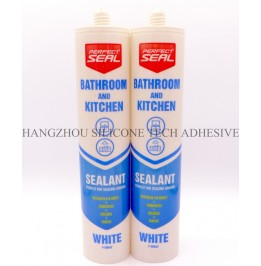Before initiating any sealant removal process, the substrate must be evaluated for structural integrity. Cracked tiles or loose grout require immediate repair to prevent water infiltration during subsequent steps. Safety protocols mandate the use of nitrile gloves, ANSI-approved safety goggles, and N95 respirators when handling chemical solvents. Work areas must maintain a minimum ventilation rate of 10 air changes per hour, as specified by OSHA standards for confined space operations.
Mechanical removal tools such as carbide-tipped scrapers should be tested on inconspicuous areas to assess substrate compatibility. Porous materials like natural stone may require specialized diamond-embedded blades to avoid surface gouging. All electrical equipment used in wet environments must comply with IP67 waterproof ratings to prevent electrocution hazards.

For silicone-based sealants, citrus-based solvents demonstrate superior penetration compared to alcohol-based alternatives. Application requires saturating the sealant bead with solvent using a spray bottle, followed by a 15-minute dwell time to ensure complete emulsification. Acrylic sealants respond better to alkaline cleaners with pH values exceeding 10, which break down polymer chains through saponification reactions.
When dealing with multi-component epoxy sealants, dimethylformamide (DMF) solutions prove effective but require stringent ventilation controls due to volatile organic compound (VOC) emissions. The solvent application process should follow a two-stage approach: initial saturation followed by agitation with nylon brushes to dislodge embedded particles. Post-softening cleanup must use neutral pH detergents to prevent chemical interactions with fresh sealant.
The removal sequence begins with scoring the sealant bead using utility knives with replaceable #11 blades set to 45-degree angles. This creates controlled fracture lines that facilitate complete extraction. Oscillating multi-tools equipped with rigid scraper blades excel at removing residual material from joint corners, operating at vibration frequencies between 12,000-20,000 RPM for optimal material disruption.
For recessed joints, custom-fabricated stainless steel hooks with 2mm radii tips enable precise extraction without damaging adjacent surfaces. The removal process should progress systematically from top to bottom in vertical joints and from dry to wet areas in horizontal applications. All debris must be collected using HEPA-filtered vacuums rated for silicaceous dust capture to maintain indoor air quality standards.
Post-removal surfaces require abrasive cleaning to eliminate microscopic residue. Non-metallic abrasive pads with grit sizes between 400-600 are recommended for ceramic tiles, while natural stone surfaces demand diamond-impregnated pads with progressive grit sequences. The final cleaning stage involves rinsing with deionized water at temperatures not exceeding 40°C to prevent thermal shock in sensitive substrates.
Moisture content verification must be conducted using impedance meters with dual-depth probes. Readings should not exceed 4% by weight for cementitious substrates and 1% for anhydrite screeds. Surface pH testing using flat-surface electrodes must confirm values between 6-9 before proceeding with new sealant application. Any deviations necessitate neutralization treatments using diluted acetic acid or sodium bicarbonate solutions.
The removal process concludes with adhesive pull-off tests using dollies with 20mm diameters. Minimum bond strengths should meet 1.5 N/mm² for structural joints and 0.5 N/mm² for non-structural applications, as per ASTM D4541 standards. Microscopic examination at 50x magnification must confirm complete sealant removal from joint profiles, with no residual material exceeding 0.1mm thickness.
Environmental sampling should detect VOC concentrations below 50 ppm during the 24-hour post-removal period. Documentation must include photographic records of each joint section, solvent batch numbers, and equipment calibration certificates. Any areas failing quality inspection require rework using the same removal protocols, with revised procedures documented in the project log.
Copyright 2019 by Hangzhou Silicone Tech Adhesive Co., Ltd. All rights reserved.
Bathroom Sealant | Acrylic Sealant | Dow Corning 795 | Aquarium Sealant | Dow Corning 732 | Clear Silicone Sealant | Polysulfide Sealant | Glazing Sealant | Mirror Sealant | IG Sealant
Powered by Onepound